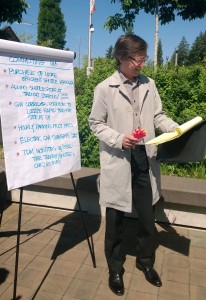 Effective leaders and managers are skilled in using facilitation and meeting management skills to build effective teams capable of solving complex problems and making lasting decisions. This half-day class is designed for mid-level managers to learn how to balance the dual role of team leader and facilitator and use practical facilitation techniques to manage meetings and engage their teams in solving problems and making effective decisions. Participants will learn and practice a variety of facilitation techniques in class.
Effective leaders and managers are skilled in using facilitation and meeting management skills to build effective teams capable of solving complex problems and making lasting decisions. This half-day class is designed for mid-level managers to learn how to balance the dual role of team leader and facilitator and use practical facilitation techniques to manage meetings and engage their teams in solving problems and making effective decisions. Participants will learn and practice a variety of facilitation techniques in class.
Example Training Outline
Course Objectives
Learn how to facilitate teams in developing workable, realistic solutions by learning how to:
- Balance the dual role of team leader and facilitator.
- Use practical facilitation tools and techniques to manage team meetings.
- Engage team decision-making models as alternatives to pure consensus.
Course Outline
- Facilitation as a Leadership skill
- Define facilitation and acknowledge multiple roles managers play in facilitating meetings
- Understand content and process roles
- Introduce the 4 P Facilitation Model – Purpose, People, Process, Plan of Action
- Purpose – How to define the purpose of your facilitation and inspire people to attend
- Setting objectives for the facilitation and planning the logistics
- Understanding the four types of conversations and appropriate facilitation techniques
- Understanding key conflict resolution techniques
- Process – How to design the appropriate structure for effective team processes
- Understand various decision making processes
- Review and practice team facilitation techniques
- Plan of Action
- Learn techniques for clarifying decisions
- Present and practice action planning tool
- Pulling it All Together – Using scenarios, develop strategies to facilitate a variety of team processes
Materials
Hand-out packet will include a Manager’s Tool Kit describing the following facilitation tools, which will also be demonstrated in the classroom:
- To manage group norms:
- Ground rules
- Parking Lot
- Charter (hand out, briefly discuss)
- To generate ideas, options:
- Brainstorm
- Round Robin
- Affinity diagram
- Large group and breakout group discussions
- To evaluate & select:
- Nominal group
- Force field analysis
- Voting
- Decision grid
